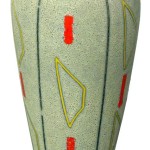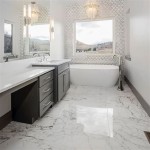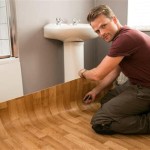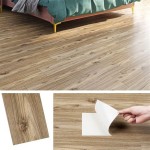Matching Bathroom Wall and Floor Tiles: A Comprehensive Guide
Creating a cohesive and aesthetically pleasing bathroom design often hinges on the careful selection and coordination of wall and floor tiles. The right combination can transform a functional space into a luxurious and inviting retreat. While bold contrasts can be striking, matching bathroom wall and floor tiles offers a sense of harmony and visual continuity. This article explores the nuances of achieving a successful matched tile design, considering factors such as color, material, texture, pattern, and size.
The concept of "matching" doesn't necessarily mean using the exact same tile on both walls and floors. Rather, it implies creating a deliberate and harmonious relationship between the two surfaces. This can be achieved through subtle variations within a similar color palette, complementary textures, or consistent design patterns. The goal is to create a unified look that enhances the overall aesthetic of the bathroom.
The advantages of using matching or coordinated tiles are numerous. A unified design can make a small bathroom feel larger and more spacious by blurring the lines between the walls and floor. It also promotes a sense of calm and tranquility, which is particularly desirable in a bathroom setting. Furthermore, a well-executed matched tile design often conveys a sense of sophistication and attention to detail.
Key Considerations for Successful Matched Tile Designs
Achieving a successful matched tile design requires careful planning and consideration of several key factors. These include the overall aesthetic goal, the size of the bathroom, the desired mood, and practical considerations like slip resistance and maintenance.
1. Color Harmony:
Color is the most obvious element to consider when matching wall and floor tiles. Using the same color tile on both surfaces creates a seamless and uniform look. However, selecting the exact same shade can sometimes appear flat and uninspiring. A more nuanced approach involves using variations within the same color family. For instance, one could use a light gray tile on the walls and a slightly darker gray tile on the floor. This provides visual interest while maintaining a cohesive color scheme.When selecting colors, it is crucial to consider the overall aesthetic goal. Light colors, such as whites, creams, and light grays, can make a bathroom feel larger and brighter. These colors are particularly suitable for small bathrooms or bathrooms with limited natural light. Darker colors, such as deep blues, greens, or grays, can create a more dramatic and intimate atmosphere. However, darker colors can also make a bathroom feel smaller, so they are best used in larger bathrooms or in combination with lighter accents.
The finish of the tile also plays a significant role in color perception. Glossy tiles reflect more light and can make colors appear brighter and more vibrant. Matte tiles, on the other hand, absorb more light and create a softer, more muted effect. It is important to consider how the finish will affect the overall color scheme and choose a finish that complements the desired aesthetic.
2. Material and Texture Consistency:
While color is crucial, the material and texture of the tiles are equally important for creating a successful matched design. Using the same material on both walls and floors can create a sense of continuity and uniformity. Common bathroom tile materials include ceramic, porcelain, stone, and glass. Each material has its own unique characteristics in terms of durability, water resistance, and aesthetic appeal.Porcelain tiles are a popular choice for bathrooms due to their durability, water resistance, and wide range of design options. They can mimic the look of natural stone, wood, or other materials, making them a versatile choice for a variety of bathroom styles. Ceramic tiles are another affordable and durable option, although they are generally less water-resistant than porcelain tiles.
Natural stone tiles, such as marble, granite, and travertine, offer a luxurious and sophisticated look. However, they are also more expensive and require more maintenance than ceramic or porcelain tiles. Glass tiles are a popular choice for accent walls or decorative features, adding a touch of sparkle and elegance to the bathroom. They are less commonly used for flooring due to their fragility and potential for slipperiness.
The texture of the tiles can also significantly impact the overall aesthetic of the bathroom. Smooth, polished tiles create a sleek and modern look, while textured tiles add visual interest and depth. Textured tiles can also provide added slip resistance, making them a good choice for bathroom floors. Combining different textures within the same color palette can create a subtle but sophisticated matched design.
3. Pattern Repetition and Scale:
Utilizing similar or identical patterns on both wall and floor tiles is another effective way to achieve a cohesive matched design. This can range from subtle geometric patterns to intricate mosaic designs. The key is to choose a pattern that complements the overall style of the bathroom and doesn't overwhelm the space.Subtle patterns, such as linear textures or small-scale geometric designs, can add visual interest without being too distracting. These patterns are particularly suitable for smaller bathrooms, as they won't make the space feel cluttered. Larger patterns, such as floral motifs or bold geometric designs, can create a dramatic and eye-catching effect. However, these patterns are best used in larger bathrooms, as they can overwhelm a smaller space.
The scale of the pattern is also an important consideration. Using the same pattern in different scales on the walls and floors can create a dynamic and visually appealing effect. For instance, one could use a small-scale version of a geometric pattern on the walls and a larger-scale version of the same pattern on the floor. This creates a sense of continuity while adding visual interest.
Alternatively, one could use a related pattern on the walls and floors. For example, one could use a striped tile on the walls and a solid-colored tile that complements the stripes on the floor. This creates a subtle but harmonious matched design. When using patterned tiles, it is important to consider the grout color. Choosing a grout color that blends in with the tile can create a seamless look, while choosing a contrasting grout color can highlight the pattern.
Beyond these primary considerations, the size of the tiles should be considered in relation to the room's dimensions. Larger tiles can make a small bathroom appear larger, and fewer grout lines can create a cleaner, more modern look. Smaller tiles, on the other hand, can add texture and detail, particularly in larger bathrooms. Consider how the tile size interacts with bathroom fixtures and the overall layout.
Lighting is another critical factor. Natural and artificial light will affect how the tile colors and textures appear. Always view tile samples in the bathroom under different lighting conditions before making a final decision. The undertones of the tile color can shift depending on the light source, so it's crucial to see how the chosen tiles will interact with the bathroom's lighting.
Ultimately, the choice of whether to match bathroom wall and floor tiles is a personal one, dependent on individual preferences and the desired aesthetic. By carefully considering color harmony, material consistency, pattern repetition, and scale, achieving a successful matched tile design that enhances the beauty and functionality of the bathroom is possible. Thoughtful planning and attention to detail are essential for creating a cohesive and visually appealing space that reflects individual style and taste.

Tiles Talk Mix And Match 6 Ways To Achieve Bathroom Bliss Perini

Matching Tiles Tips And Suggestions For Pairing Porcelanosa

Tiles Talk Mix And Match 6 Ways To Achieve Bathroom Bliss Perini

Matching Wall And Floor Tiles

20 Matching Floor And Wall Tiles In Bathroom Decoomo

Matching Floor And Wall Tiles In Your Bathroom Tile Stone Online

Design Tips For Matching Ceramic And Vinyl Floor Wall Tiles Builddirect Blog

Matching Wall And Floor Tiles 2 Go Ltd

Matching Wall And Floor Tiles

Matching Floor And Wall Tiles In Your Bathroom Tile Stone Online








